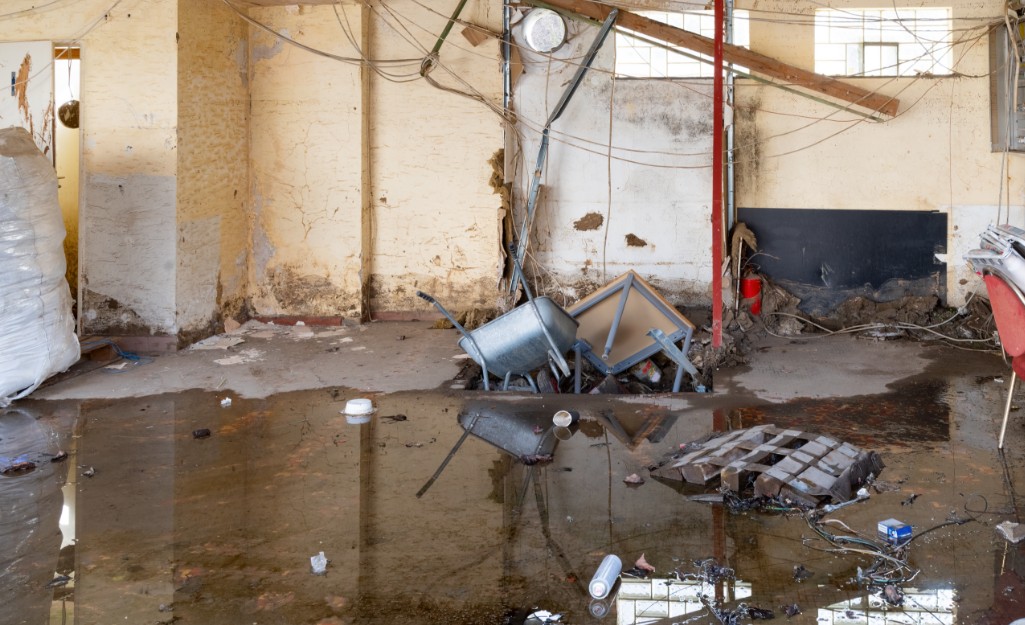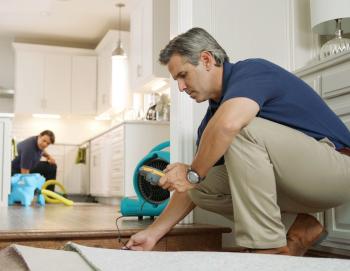What makes Water Damage Restoration important after a flood?
Water Damage Restoration 101: Understanding the Process and Price
Water damage can strike suddenly, leaving home owners in a state of complication. Recognizing the restoration process is essential for effective recovery. From assessing the damage to choosing the ideal company, each step affects the overall outcome and cost. Factors such as the sort of water damage and seriousness likewise play a substantial function. What are the particular methods used in restoration, and how can one plan for possible costs?
Kinds of Water Damage
Water damage can occur from various resources, each offering special difficulties for restoration. The 3 key types of water damage are categorized based on contamination degrees: clean water, gray water, and black water. Tidy water originates from sources like broken pipelines or rain, presenting very little wellness threats. Gray water, that includes wastewater from sinks or washing makers, consists of pollutants that might create discomfort or disease if consumed. Black water, one of the most dangerous classification, comes from sewer or floodwaters, including damaging bacteria and virus. Each type requires certain restoration methods and safety and security steps to effectively alleviate and address the damage health and wellness risks. Comprehending these distinctions is necessary for professionals and house owners associated with the water damage repair process.
First Assessment and Inspection
An extensive first analysis and inspection are important action in the water damage reconstruction procedure. This stage starts with a specialist evaluating the degree of the damage, determining the resource of the water invasion, and figuring out the kind of water included - Flood Cleanup Services. Professionals utilize specialized equipment to measure dampness degrees in numerous products, such as wall surfaces, floors, and furniture. Additionally, they assess structural integrity and possible wellness hazards, consisting of mold and mildew development. The findings from this evaluation inform the restoration strategy, assisting needed actions and resource allotment. Accurate documents of the damage is essential for insurance cases and future referral. Generally, this preliminary assessment lays the foundation for efficient remediation, guaranteeing a detailed response to the details circumstance at hand

Water Removal Techniques
Adhering to the preliminary assessment, reliable water removal techniques are used to reduce damage and stop further issues. These methods include the usage of customized tools such as industrial-grade vacuums and submersible pumps. The selection of method depends on the quantity of water present and the kind of materials influenced. For standing water, completely submersible pumps are commonly used for quick removal, while vacuum cleaners are optimal for removing water from rugs and furniture. Furthermore, progressed techniques like water removal mats might be used for hard-to-reach areas. The objective is to eliminate as much water as feasible, lessening the possibility for mold development and structural damage. Motivate and effective water removal is necessary in the overall water damage remediation procedure.
Drying Out and Dehumidification Process
Once the water extraction is total, the drying out and dehumidification process becomes vital to recovering the affected area. This phase commonly utilizes industrial-grade dehumidifiers and air movers to properly reduce wetness degrees. The dehumidifiers attract in moist air, eliminating excess moisture, while air movers distribute air to speed up dissipation. Tracking devices is often utilized to track humidity and temperature level degrees, guaranteeing suitable drying conditions. The period of this process can vary depending on the degree of the water damage and environmental factors. It is vital to completely completely dry all impacted products, consisting of walls, flooring, and furnishings, to stop mold growth and architectural damage. Correct execution of this step is essential for an effective restoration outcome.
Cleaning and Sanitizing Affected Locations

Preliminary Assessment and Inspection
Prior to beginning any kind of remediation initiatives, a complete initial evaluation and evaluation of the influenced areas are essential for efficient cleansing and sanitizing. This process entails identifying the degree of water damage, establishing the source of the water invasion, and reviewing the materials impacted. Assessors generally try to find signs of mold and mildew growth, architectural integrity problems, and damaged personal belongings. The assessment additionally includes examining wetness degrees using customized equipment to ensure no surprise water pockets remain, as these can result in additional difficulties. Recording the searchings for is essential for intending the next actions in the reconstruction process. A comprehensive preliminary analysis enables repair professionals to devise a targeted strategy for reliable cleansing and sanitizing, ultimately decreasing damage and health and wellness risks.
Cleaning Up Strategies and Products
Efficient cleansing and disinfecting of water-damaged areas require a range of items and techniques tailored to the details materials impacted. For porous surfaces like drywall and carpeting, removal techniques are necessary to get rid of excess moisture, followed by deep cleaning with specialized detergents. Non-porous materials such as floor tile or metal can be cleaned up making use of commercial-grade cleansers that effectively remove pollutants. Heavy steam cleaning is an additional efficient strategy, especially for carpetings and furniture, as it utilizes heats to eliminate germs and mold and mildew. Furthermore, green products are progressively preferred for their safety and security and efficacy. Ultimately, picking the proper cleaning methods and products not just guarantees prompt cleanliness yet also aids in preventing further damage and health hazards connected with water breach.
Sanitization and Disinfection Techniques
When attending to water damage, correct sanitization and sanitation techniques are important to assure the safety and security and wellness of the affected environment. After preliminary cleaning, surface areas must be treated with ideal disinfectants to get rid of pathogens, mold and mildew, and germs that grow in damp problems. Typical methods consist of using EPA-approved chemical anti-bacterials, which can be used through spraying or cleaning techniques. Furthermore, ultraviolet (UV) light systems can efficiently disinfect areas by neutralizing microbes without severe chemicals. The selection of approach usually depends upon the sort of materials her response impacted and the degree of contamination. Inevitably, complete sanitization not just recovers a secure home yet likewise aids avoid future health and wellness threats connected with sticking around dampness and mold and mildew development.

Fixings and Restoration Options

Elements Influencing Restoration Prices
The extent of water damage directly impacts the repair costs home owners can expect to incur. Elements such as the resource of the water, the period of exposure, and the affected materials substantially affect pricing. Clean water damage from a broken pipeline is generally much less costly to restore compared to damage created by sewer (Flood Cleanup Services). Additionally, the level of contamination determines the need for specialized cleansing and disposal services, even more increasing expenditures. Geographical place additionally plays a role, as regional labor rates and accessibility of repair services can vary. The necessity of the action impacts prices; quicker treatments normally lead to decrease general expenses by avoiding further damage. Recognizing these aspects is crucial for house owners when estimating remediation expenses
The three main types of water damage are categorized based on contamination degrees: clean water, grey water, and black water. An extensive preliminary evaluation and evaluation are vital steps in the water damage restoration procedure. For standing water, completely submersible pumps are usually utilized for quick removal, while vacuum cleaners are optimal for extracting water from rugs and upholstery. The degree of water damage directly affects the repair costs house owners can anticipate to sustain. Clean water damage from a broken pipeline is normally less costly to bring back contrasted to damage created by sewage.